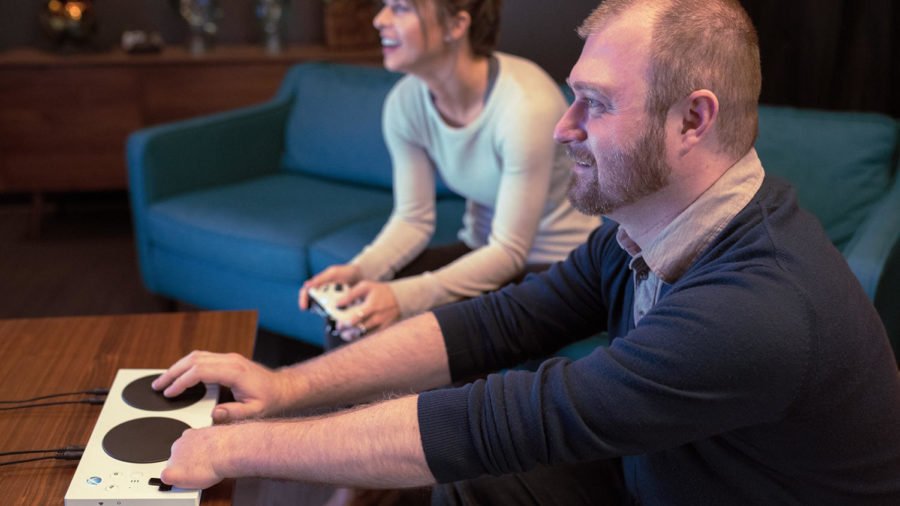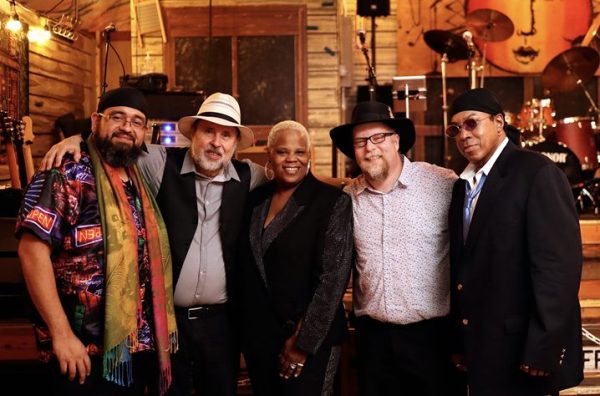New adaptive controller promises an inclusive future in video games
February 27, 2019
Advertised during Super Bowl LIII, the Microsoft Adaptive Controller is a breakthrough tool capable of making video games more accessible, including to those with physical disabilities.
The adaptive controller takes an inclusive design approach, made for gamers who aren’t be able to hold or reach all the buttons on a traditional controller. This new tool was developed in a partnership between Microsoft and organizations including The Cerebral Palsy and The AbleGamers Charity.
The face of the controller has a directional pad and two circular touchpads that can be programmed to any of the standard buttons on an Xbox controller. It’s designed to act as a hub for other external buttons and joysticks, allowing users to set up different inputs and customize their experience.
The adaptive controller was created for individuals who have previously been unable to play games due to physical disability. Dylan Hanson, a sophomore in computer science, lives with a physical disability in his left arm. Hanson thinks this new adaptive controller is good for anyone who has a hard time playing video games.
“It makes it more viable for anyone to play,” Hanson said. “It reminds me a lot of a PC because you can bind [inputs] to whatever you want. Anyone can do anything with it. [Microsoft] basically leave it open to use whatever mechanics they want for the game.”
Despite his physical impairment Hanson still plays video games. He plays “Super Smash Bros” competitively and casually plays games on his Xbox, PlayStation, and PC. Currently, even competitive-level games like “Street Fighter” are able to be played with retro arcade-like game pads, which shares design elements with Microsoft’s new controller, making the game much more accessible and helps games become bigger to wider audiences.
Before the creation of the adaptive controller, gamers like Hanson have needed to get creative with their approach.
“Whenever I’m playing any games on Xbox, because I’m only missing part of my left hand, I use a modified version to use the left trigger button, because if I play a shooter…I’ll put the controller on my knee so that way I can hold it down, then I can actually aim,” Hanson said. “It makes it more flexible in my opinion.”
Hanson has recently gotten into Virtual Reality gaming but thinks the controllers are a little hard to use. He expressed he would like to see more accessible controllers for virtual reality gaming, but thinks this new adaptive controller will create a precedent for future accessibility technology in the gaming industry.
Steve Moats, director of Student Disability Resources, thinks the controller can help create social opportunities with the inclusion of students who could not otherwise play games.
Moats said he would like to see more accessibility technology in the future in the form of increased access to voice-controlled systems and improved text-to-speech technology.
Hanson thinks accessibility technologies are important in the games industry and hopes to see more in the future.
“I definitely want to see more viable things for one-handed gamers, or, people in general who can’t use both hands”, said Hanson.
The Xbox Adaptive Controller was released on Sept. 4, 2018, and is available at GameStop and The Microsoft Store for $99.99.

















